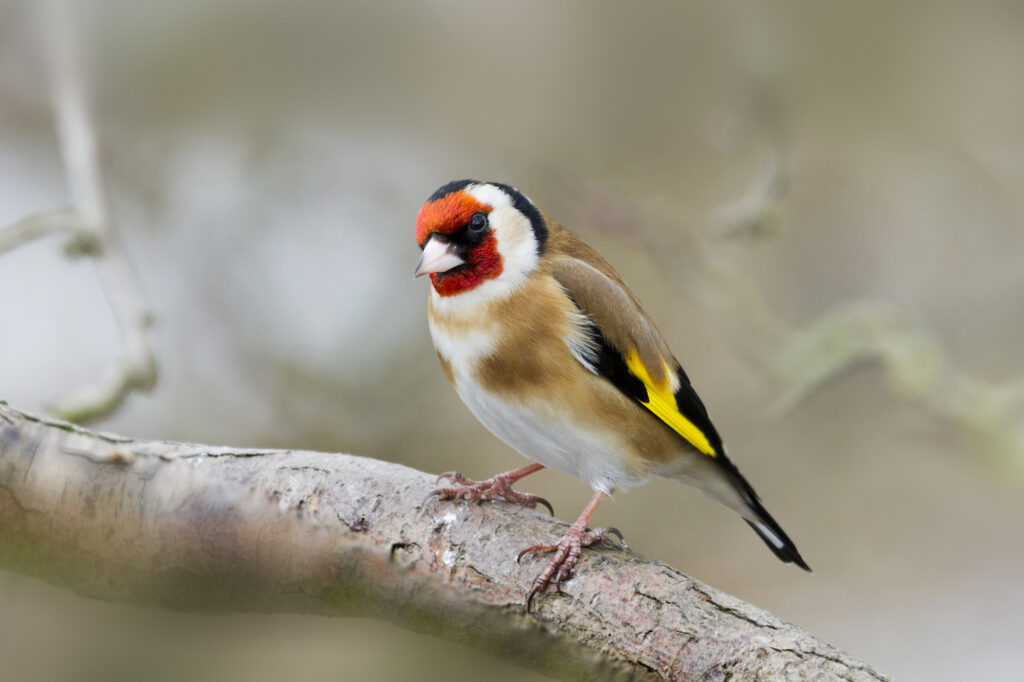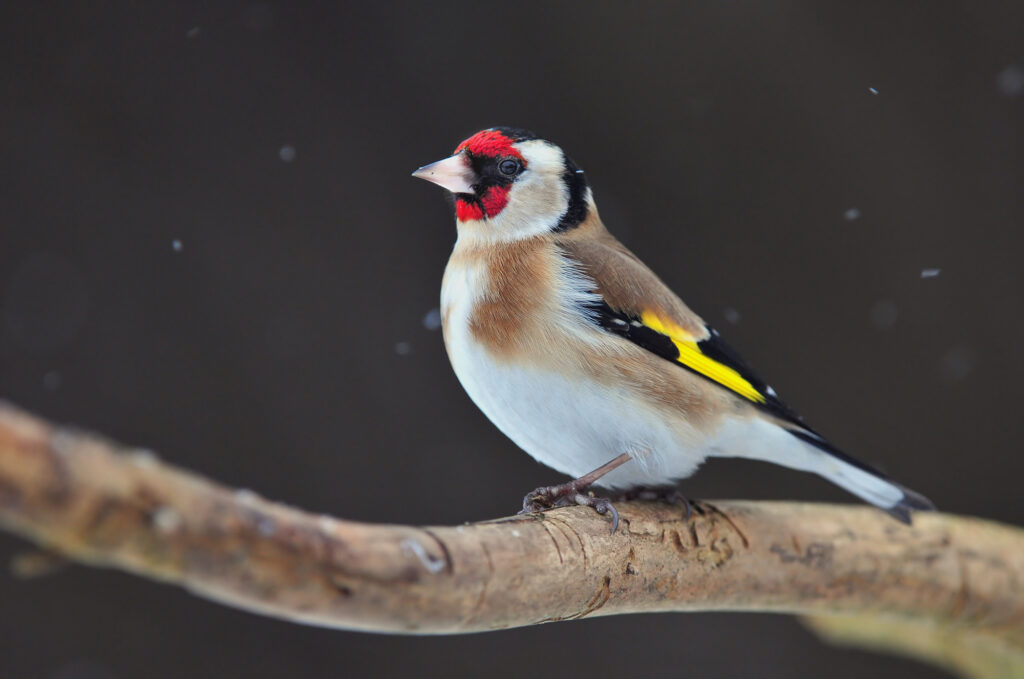The European goldfinch (carduelis carduelis) is a beautiful bird that can be found in many areas of the UK. Its striking plumage and sweet singing make it an ideal addition to any garden, while its adaptability makes it easy to spot even in urban environments. This article will explore the identification, habitat, diet, behaviour, breeding and conservation status of the goldfinch so you can get up close with this delightful species. Whether you’re already familiar with these birds or just getting started on your wildlife journey – come learn about the fascinating world of goldfinches.
How To Identify a Goldfinch
The goldfinch is a small bird, measuring about 12-14 cm in length and weighing just 15-20 grams. It has a whitish-brown body with black and yellow wings and black tail feathers, as well as reddish-orange patches on its crown and throat. Its bill is short and conical, usually pale pink or white in colour.
Goldfinches have distinct calls that sound like “perchik” or “tsee-eee” which they use to communicate with each other while searching for food sources during migration season. In addition to this vocalization, they may also produce soft chirps when perched atop trees or shrubs near nesting sites during breeding season.
Overall, the goldfinch is an easily recognisable species thanks to its distinctive colours and markings combined with its unique call notes that make it stand out among other birds in Britain’s countryside landscape.

Goldfinch Habitat
Goldfinches prefer open habitats such as meadows, farmland, gardens and parks. They are often seen in flocks foraging on the ground or perched atop tall grasses or shrubs. They also inhabit woodlands with plenty of trees to perch in and feed from. They love areas with plenty of food sources like thistle seed heads, dandelion flowers and other wildflowers. Goldfinches will also visit bird tables where they can find sunflower seeds, peanuts and nyjer seed.
In winter months, they may be spotted visiting window bird feeders in gardens during cold weather when food is scarce in the wild.
In summer months, goldfinches build their nests among dense foliage near the tops of trees so that they have an unobstructed view over their territory below them while keeping out of sight from predators like cats or birds of prey who might try to snatch them up if given the chance.
Goldfinch Diet
The diet of the goldfinch consists mainly of seeds, buds and flowers. Goldfinches feed on a variety of small grains, including thistle and teasel seed heads, as well as dandelion, plantain and sunflower seeds. They also eat insects such as aphids and caterpillars when they are available.
Goldfinches can be seen in gardens throughout the UK during summer months, where they will often use their long beaks to pick at flower petals or sip nectar from tubular flowers like honeysuckle or foxglove. During autumn, they will often flock together in large numbers to feast on ripening berries before migrating southwards for the winter season.
In addition to this natural diet, goldfinches can also benefit from supplementary feeding with specialised birdseed mixes containing millet, niger seed and sunflower hearts which should be placed in suitable feeders away from predators such as cats or tree squirrels. This is especially important during periods of cold weather when other sources of food may become scarce.

Goldfinch Behaviour
Goldfinches are sociable birds that live in flocks throughout the year. They are often seen together on thistle heads or other seed-bearing plants, using their sharp bills to crack open the seeds they find. They also love to bathe and preen themselves in water, taking turns splashing around with each other as part of their social activities.
Goldfinches have adapted well to human presence over time so can often be spotted visiting gardens or parks where there is plenty of food available for them – especially if you provide feeders filled with sunflower hearts. In general though, these birds tend not to stay still too long, so patience is key when trying to observe them up close.
Breeding Habits
Goldfinches breed between April and August each year.
Nesting Sites
In terms of nesting habits, goldfinches prefer to build cup-shaped nests out of grasses and mosses lined with soft materials such as hair or wool near shrubs or trees where they feel safe from predators. The female usually lays four eggs which hatch after 12 days; both parents take turns incubating them until they fledge at about two weeks old. After this point, young birds become independent but remain within family groups for some time afterwards until ready to disperse into new areas looking for food sources during winter months when resources become scarce elsewhere.
Courtship Rituals
During breeding season, male goldfinches will perform elaborate courtship displays by flying high into the air before diving back down towards potential mates while singing loudly. They will also display their plumage by fluffing up their feathers to appear larger than normal while singing loudly to attract a mate. Once paired off, the male will feed his chosen mate until she is ready to lay eggs which usually takes around two weeks after mating has occurred.
After laying her eggs (usually four or five), the female incubates them for 12 to 14 days before they hatch into chicks. The chicks remain in the nest for another two weeks before fledging out into the world as fully grown juveniles at around 25 days old.
Goldfinch Conservation Status
The conservation status of goldfinches in the UK and globally is considered to be of least concern. According to the BTO (British Trust For Ornithology), there has been a 70% increase in BTO Garden BirdWatch participants reporting sightings now than there was 20 years ago.
Sources and References
- Calling All Gardens With Goldfinches – bto.org

Ash is a contributing author who has been writing about wildlife for as long as he can remember. He has a vast knowledge of many different types of animals, from the tiniest shrews to the great whales that live in the deepest oceans.
